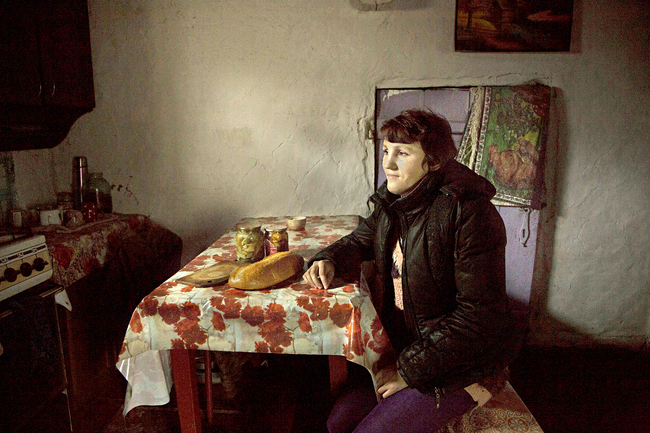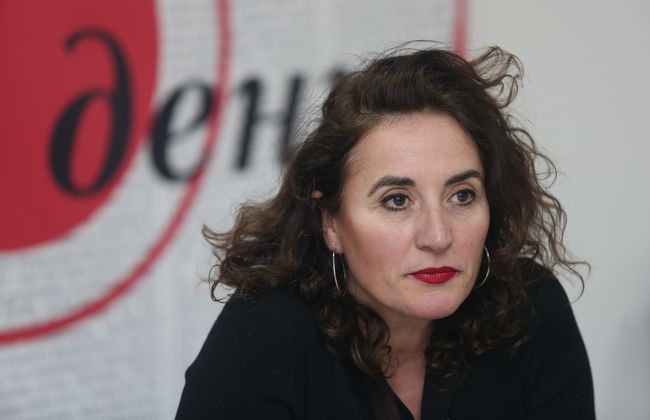“Life after Chornobyl”
Quintina VALERO: “I want to inspire everyone to rethink the global tragedy on a qualitatively different level”
This year marks the 30th anniversary of the explosion at the Chornobyl nuclear power plant. This disaster has forever changed the lives of thousands of Ukrainians, who were forced to flee hastily from the contaminated area and seek a new home. But still, people continue to live in the Chornobyl zone. Meanwhile, the consequences of Chornobyl are being felt three decades after the meltdown – in the environment, in the rising cancer rates, and so on.
A Spanish journalist Quintina Valero has taken interest in life after Chornobyl. Her photographs have been published in renowned Spanish journals El Pais and El Mundo, as well as in the British The Guardian. And for the past year she has been working in Ukraine, accompanied by her colleagues, in order to talk about the consequences of the Chornobyl accident and to make this area safer for people who still live there. The “Life after Chornobyl” exhibition will open on April 26 in the Mystetsky Arsenal. As the project undergoes some final preparations, Quintina visited The Day’s office to talk about the purpose of the event and her impressions of Ukraine.
Tell us please about your project on Chornobyl, for which you are cooperating with Zinaida Likhachova. What are the project’s concept and main objective?
“I have two different approaches to the project. The first is related to the fact that I am one of the founders of a team, which has been working on various projects for two years. In October we joined the team in London. And the project on Chornobyl started in May 2015.
“That was the time when I was preparing a photo essay about a shelter for children who suffer from cancer. It was founded by NGO ‘Guarantee Fund’ thanks to international support, especially from the Italian organization Soleterre, which gives money to families whose children suffer from cancer. And then we explored this issue further in its connection with Chornobyl. We decided that it would be good if all the artists in our team joined the project about Chornobyl. And then we invited Zinaida Likhachova and other Ukrainian artists to cooperate and become part of our team. We explore the connection between the Chornobyl disaster and the families that still live near this area.
“This is a great project. It is called ‘Life after Chornobyl.’ We decided to work in different European countries. The cooperation with Ukrainian artists is important for us, because they know what’s going on here ‘first hand.’ And as international artists we wanted to develop our own perception of Chornobyl. My prerogative is a photo project. I concentrated on towns in Chornobyl zone. I visited them twice this year.

QUINTINA VALERO / Photo by Ruslan KANIUKA, The Day
“Everyone goes there on tours, it’s important. But it is also important to see another area. People still live there, and they are not a part of the tour, it is a very poor area. I wanted to see the situation with my own eyes. I had read that a plant restoration project was being planned – but when I visited the zone, I found out that there was nothing like that.”
When is your project going to be completed?
“It will be presented at the Mystetsky Arsenal on April 26 to commemorate the 30th anniversary of the tragedy. So I’m still working on the project. I have yet to travel, to communicate with different families, and to see the situation from the inside. We also record interviews with scientists, Chornobyl liquidators, and evacuated people. We have been working on this for a very long time...”
You are shooting photos in the Chornobyl zone... What are you going to show the world this way?
“We evaluate Chornobyl not only in Ukraine. This is a big international problem. The plant pollution is only half of the consequences. We wanted to raise awareness of the situation, to familiarize the people with it. The consequences of what had happened are being felt after 30 years. Many people in Ukraine do not want to talk about it. They are tired of it.
“I have the experience of working with families and children from the area. We also talk with doctors and scientists about the increased rates of cancer and other diseases.
“I visited the areas that are very poor. And not just because of what happened after the disaster, but also because the collective farms were closed. These areas are drowned in poverty, people are drinking heavily. So it’s not the direct consequence of Chornobyl, but because of it we cannot learn about other problems. I met children who are now three years old, and who were born without arms three generations after the tragedy. Tomorrow I’m going to interview a family in which a child was born without legs. The consequences of the tragedy have not been sufficiently analyzed still. While in the Chornobyl zone, I carried a dosimeter with me; and I was frightened, because in some places the radiation level exceeded the maximum on the scale. So I want to raise this issue, to rethink it. I feel that this is an obligation for me and my work. This area should be more secure. After all, there are many children who are play on the ground and know nothing about the dangers.”
You have visited Ukraine before. Previously, you were in eastern Ukraine, in the ATO zone.
“Yes, I was in the east – in Donetsk and Horlivka. For the first time, when I was engaged in the project related to children suffering from cancer. I wanted to see two different families – from eastern and western Ukraine, who would meet in one place. They had one common problem – cancer, and they had no barriers. It was evident that political ideas separated them, but they still helped each other.
“In this project, I met with Kyrylo and his mother Natasha – they are from Horlivka. The circumstances were such that the child had not seen his family for a year... I went with this baby to the east. I saw the situation firsthand. In May 2015 I was in Donetsk, and it looked a lot like an anti-city. At that time it was bombed a lot. It was obvious that people wanted peace, they were tired of the war. Propaganda is rampant there, the people think of themselves as Ukrainians, but are convinced that they are bombarded by Ukrainians... I heard different versions and different attitudes. But every one of them carried one message – people were tired. They were tired to stand for 24 hours in the queue to cross the border, so that they could receive pension to be able to buy food.”
In your opinion, how important it is to show the truth about what is happening in Ukraine through the art of photography?
“It’s really important. We live in a visualized world. As a journalist, I find that both images and words are important. For the past two years we all have talked about Ukraine, the revolution and the conflict. Also the role of media is important. When I talk with editors of European agencies about Ukraine, I feel that they have almost forgotten what is happening here. Therefore, it is important that press would convey the information through images. In my case, I am more of a photographer that a journalist. But I try to do both, because I work alone.”
How a picture can reflect a mood, an emotion, a worldview?
“It depends on the photographer and the person being photographed. This is a dialog, a language you create with someone you are working with. After all, you have to spend time with the person you photograph – at least, this is the way I work. It is very difficult when you don’t know the language, as in my case. I had to rely on journalists or translators. This complicated communication. So you have to trust people, and people trust you. People are willing to see the truth and reality. In my works I always try to show the truth about what is happening – as far as possible. This is the only way I manage to convey emotions and feelings, to get a reaction. And this is the trend of contemporary photography.”
Newspaper output №:
№20, (2016)Section
Society





